
Williams Woods is a clayplain forest, which, as the name implies, is a forest growing in a relatively flat area with clay soils. Similar forests once filled much of the Champlain Valley, but because the rich clay soils make for excellent farming, almost all of the forest (over 99% according to The Nature Conservancy) was cut and replaced with farms. This 63 acre forest is one of only a few intact examples of clayplain forest, though it too has been affected by human uses, such as management as a woodlot, and grazing land for livestock.
The clay soil in the Champlain Valley was deposited after the last Ice Age, when a glacial lake and then an inland sea covered much of the area. Clay deposits form only in mostly-still water, unlike the sandy soils that formed along beaches and river deltas on the edge of the ancient waterway. The tiny particles of clay soil hold rich nutrients, but are largely impenetrable to water, so this forest experiences standing water for much of the year:
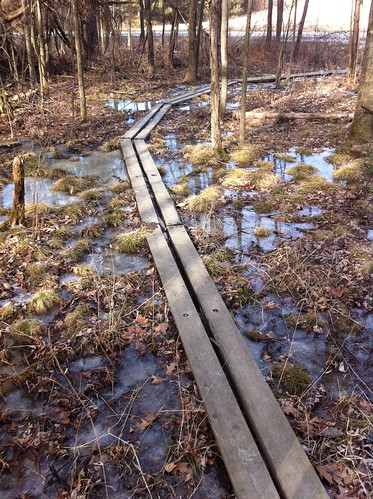
Temporary vernal pools form in many areas in the early spring when lower levels of the soil are frozen (as they were yesterday), but in the case of the clayplain forest, these pools remain well after the soil thaws, because the water can't soak into the ground. The hummocky "pillow and cradle" topography of the area increases the pooling of water as well. The presence of vernal pools poses unique challenges for the plants living in the area, but also offers habitat for several species of amphibians.
But... if these soils were deposited under a lake, shouldn't they be flat? Why would hummocky terrain form? The answer to this question lies in the wind...
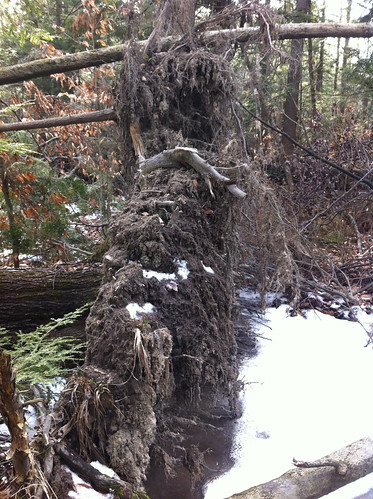
The dense and often saturated clay layers in this forest do not allow the roots of trees to embed deeply in the soil. Instead, they spread out. The lack of deeper roots leads these trees to be very vulnerable to 'wind throw'. The funneling effect of the Champlain Valley on winds, the proximity of Lake Champlain, and, more recently, the clearing of adjacent land for agriculture all add up to a lot of wind. As trees periodically blow over and later decompose, mounds and pits are formed in the landscape... and because this area has never been plowed, the actions of wind have had a long time to impact the area's topography. Because water does not readily soak into clay soil, small streams crossing the site add to the sculpting of the landscape as well.
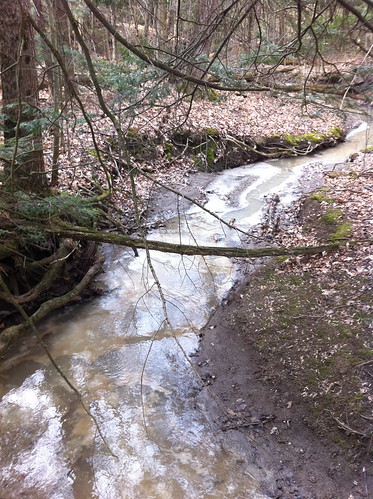
Although it has been enhanced a bit by clearing of adjacent areas, windthrow is a natural process in Vermont's forests. The continual changes in the landscape due to trees being blown over adds to the diversity of species that can use the forest. Those trees that do survive the wind have several advantages, too - the Champlain Valley is the warmest part of Vermont, and as mentioned earlier in this post, the soil is very fertile. Plant diversity in the area is high, and includes oaks rarely see in Vermont, such as swamp white oak and bur oak, as well as smaller plants such as barren strawberry. These plants were the main reason I came to visit this forest.
Early March is not a good time to look for plants, but I still found quite a few neat and unusual plants. The most impressive were the very large oaks and white pines in the forest:

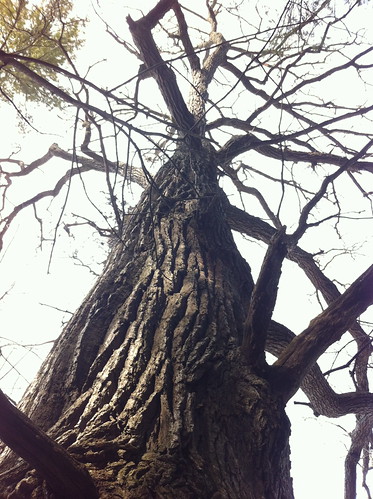
(I think both of the above were bur oak. Below is a white oak.)
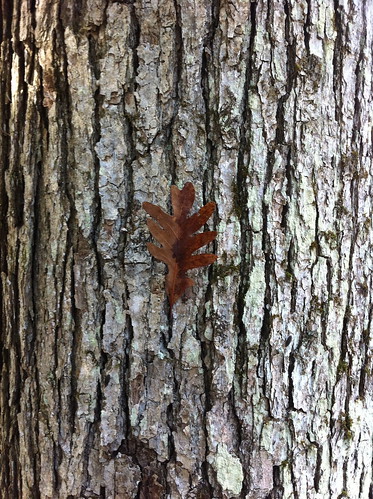
White pine is one of the most common trees in Vermont, but magnificent specimens like those below are not all that common.
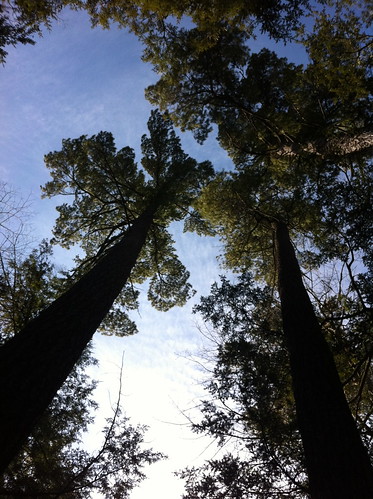
Nearby was a much younger pine forest. Plant diversity here was very low, but there seemed to be a lot of birds and squirrels using the young forest, and deer may also use the area for shelter during times of heavy snow.
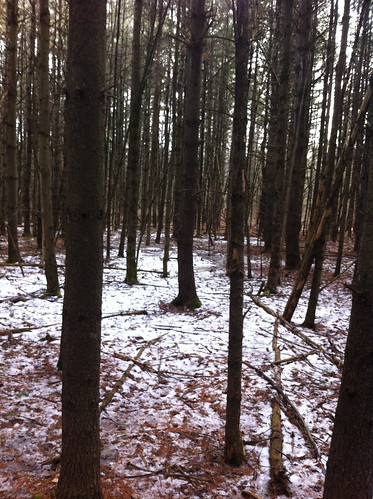
The understory has not yet come to life, as just three days ago there was still a layer of snow here. Still, there were a few smaller bryophytes and fungi to see, such as turkey tail fungi and stairstep moss:

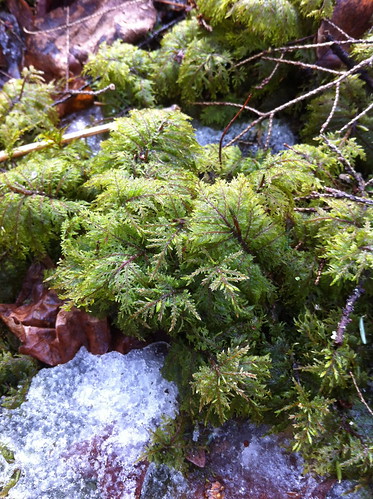
Despite the time of year, I was able to use iNaturalist to document 32 plant species, four insects, and one fungi (click for list, map, and photos). I also heard chickadees, ravens or crows, and gulls, though I didn't add them to the iNaturalist list. There are a couple of species among those observed that I was unsure of the ID of, so if you know, create an iNaturalist account and tag them for me!
And, if you're passing through Charlotte and have a bit of time, I definitely recommend visiting this forest. Bring boots and old pants if it isn't snowy, because despite the well-maintain boardwalks on this trail, you'll manage to find your way into the deep clay mud at least once on this hike. If you do visit these woods, and would like to share what you find, comment here or upload your observations to iNaturalist. I plan to revisit the site in a few months and look for spring wildflowers, as well.

No comments:
Post a Comment